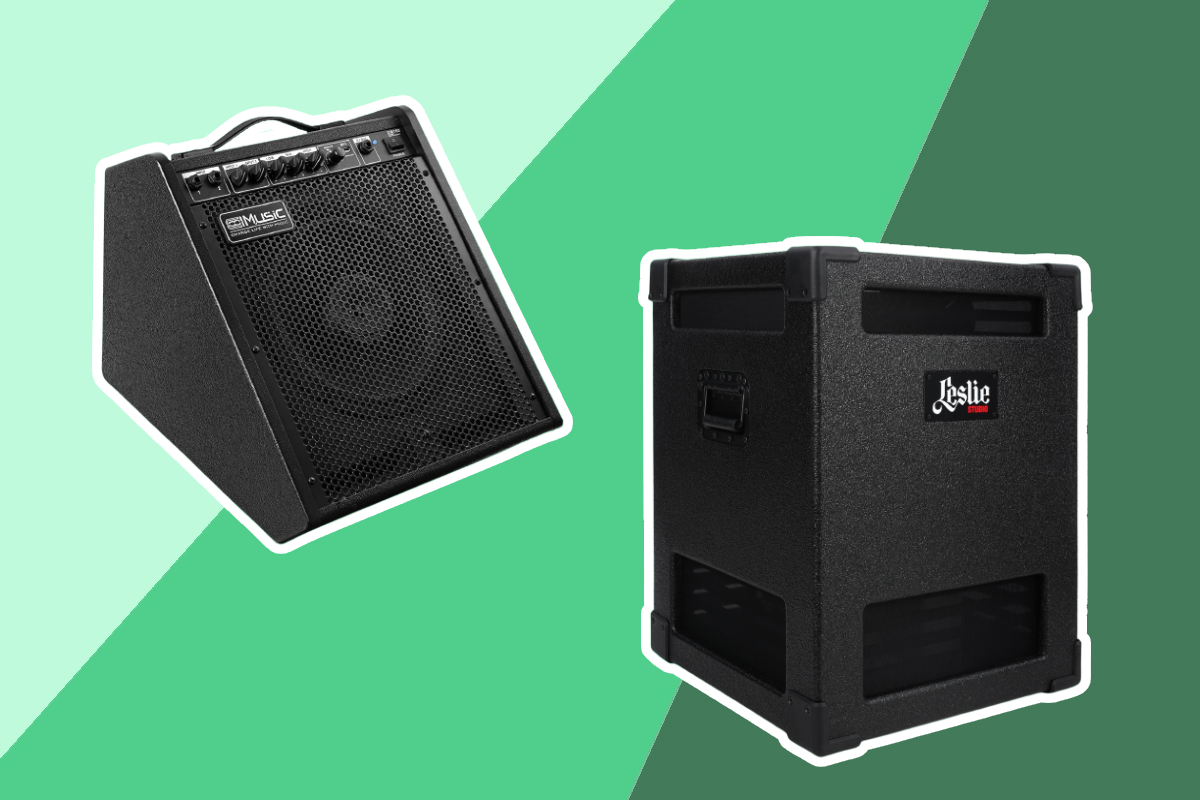
Are you rehearsing in a garage with a bunch of your friends? Or already playing in front of a live audience? Regardless of where you are in your musical journey, a keyboard amplifier can help you to sound great and make a splash in your performances. In this article, we’re going to look at the best keyboard amps on the market and help you choose the right one for your needs.
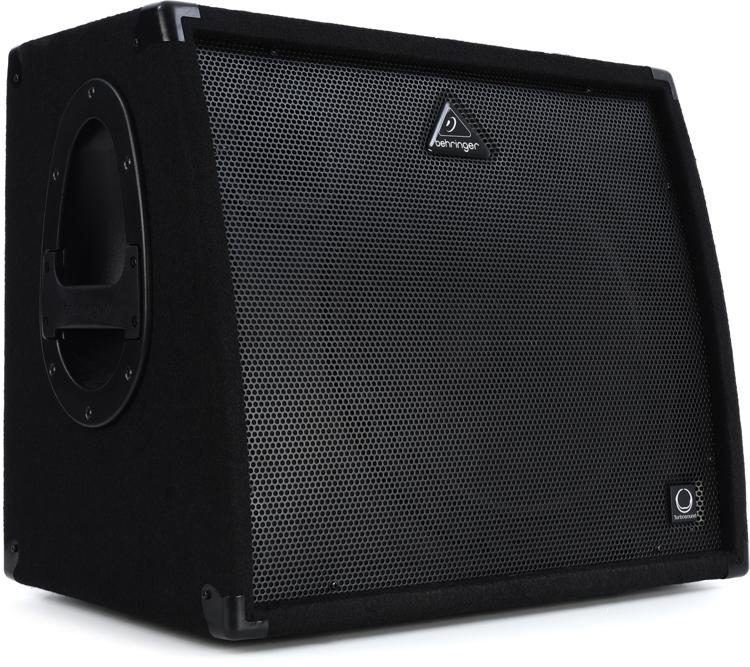

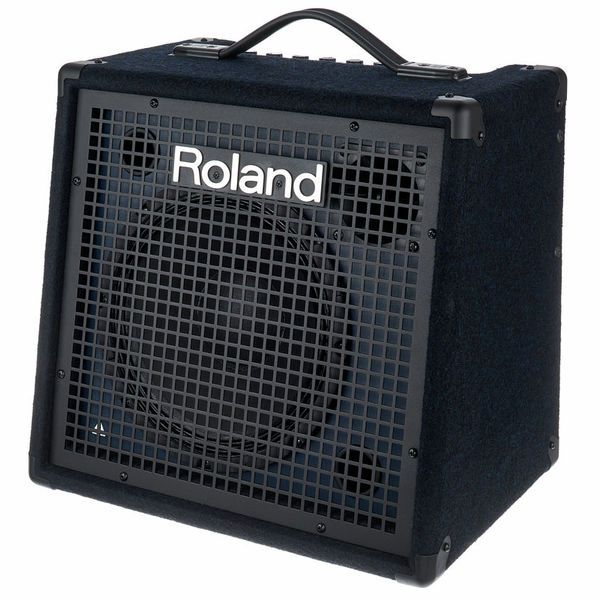

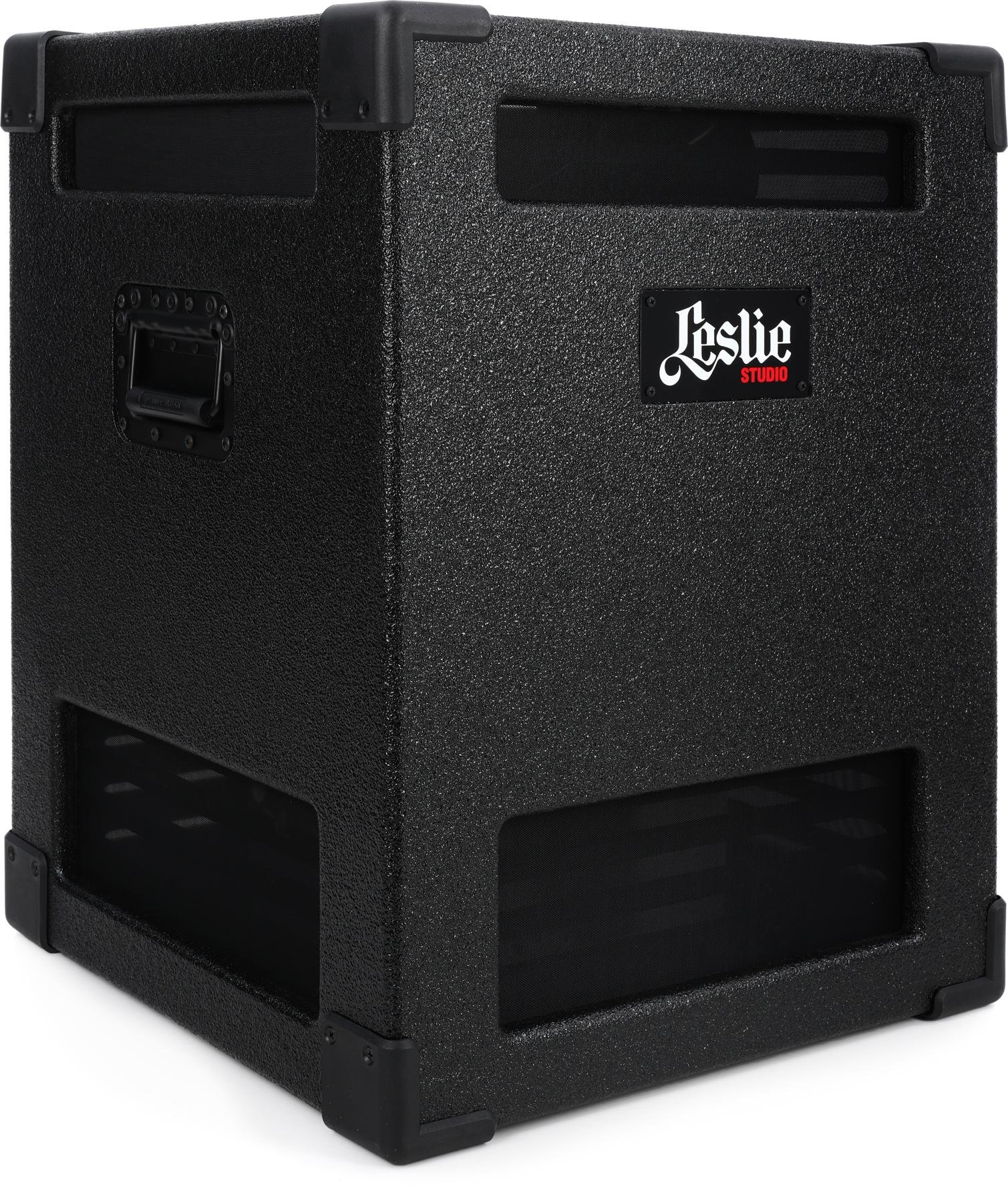

There are a lot of different keyboard amps available, and it can be tough to know which one is right for you. That’s why we’ve put together this guide. We’ve looked at a variety of different factors, including power, portability, and price. Don't put off getting a keyboard amplifier any longer - find the perfect one for you in our list below.
| № | Name | Rating | |
|---|---|---|---|
| 1 | Behringer Ultratone KXD15 |
9,8
|
Check price |
| 2 | Roland KC-80 |
9,7
|
Check price |
| 3 | Leslie Studio 12+ |
9,4
|
Check price |
| 4 | Motion Sound KP-500S |
9,3
|
Check price |
| 5 | Leslie Model 2101 mk2 |
9,2
|
Check price |
| 6 | Behringer Ultratone K900FX |
9,1
|
Check price |
| 7 | Donner DKA-20 |
9,0
|
Check price |
| 8 | Vox VX50KB |
8,9
|
Check price |
| 9 | Peavey KB5 |
8,9
|
Check price |
| 10 | Coolmusic DM100 |
9,5
|
Check price |
More features: 1″ high-frequency driver, 7-band graphic EQ, 2-year warranty

The Behringer Ultratone KXD15 is our Editor’s Choice for the best keyboard amplifier that will give you plenty of power (600W) and great sound quality, thanks to a 15″ Turbosound speaker and a 1″ high-frequency driver. The 4-channel stereo mixer with a 7-band graphic EQ provides all-in-one PA functionality so you can use this amp for your keyboard and other instruments as well. The XLR input with FBQ feedback detection system accommodates any standard dynamic mic so you can use this amp for vocals. The Klark Teknik effects processor with 100 presets, including reverb, chorus, flanger, delay, and more, gives you plenty of options for tweaking your sound. The link output allows linking to a slave amplifier for true stereo operation, which is great if you need a larger amp.
The Behringer Ultratone KXD15 is not too different from its predecessor the Behringer Ultratone KXD12. They are identical in design and features with the keyboard amplifier size being the only difference between them. The KXD15 is the biggest and baddest keyboard amp by Behringer. It is a better option for a serious musician looking for a thumpy bass, a shimmery top-end and punchy mid-range.
More features: 2-band EQ, 2-year warranty

Roland’s KC-80 keyboard amp is a great option for players who need a compact, portable amp that can still pack a punch. The highly efficient 50-watt amplifier is more than enough for most practice and performance situations, and the 3-channel design includes inputs for both 1/4″ line and XLR microphones. The stereo auxiliary input (RCA type) is perfect for connecting portable music players, and the rotary controls make it easy to adjust channel and headphone levels. Plus, the Low and High EQ knobs allow you to fine-tune your sound. Whether you’re a bedroom player, a musician on a budget, or someone who needs portability, the Roland KC-80 is a great option.
Compared to its predecessor, the KC-60, the Roland’s KC-80 keyboard amp has an improved power section that offers better stability, higher output, and enhanced bass reproduction. In addition, its 10-inch woofer is a worthy upgrade as it produces better sound quality. You can even extend the low end by driving a powered subwoofer from its sub-out jack. It is a perfect option if you love a big, full sound.
More features: footswitch, 2-year warranty

There are a number of factors that make the Leslie Studio 12+ our premium pick. Firstly, its vintage tube tone is second to none. This gives you the classic rotating-speaker sound in a combo amplifier, which is perfect for gigging with. Secondly, the Studio 12+ comes with a footswitch to switch between fast and slow rotor speeds – something that’s not always common on other models. Finally, the solid-state power amp (100W) ensures that you’ll get a rich, full range of sound regardless of what instrument you’re plugging into it. Overall, the Leslie Studio 12+ is the most gig-ready and versatile Leslie combo amplifier on the market.
The Leslie Studio 12+ is better than most amps by Leslie, including the 2101 MK1. It has a real bass rotor, while the Leslie 2101 MK1 has a simulated bass rotor. It also has a better solid-state power amp. Moreover, the Leslie Studio 12+ is the smallest dual rotor amp Leslie has ever designed for general applications. It is the perfect amp to buy if you feel like splurging.
More features: two 3.5″ Ferro-cooled horns
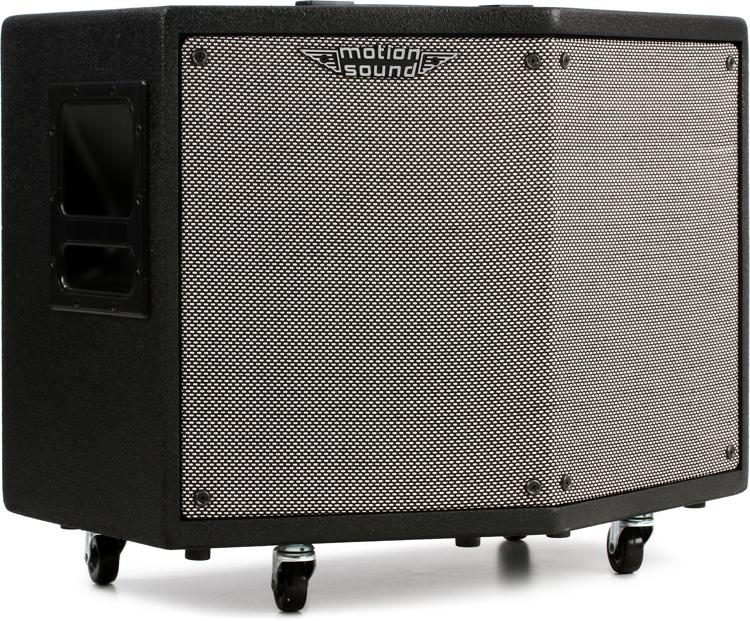
The Motion Sound KP-500SN stereo keyboard combo amplifier is perfect for filling large spaces with its 500 watts of power. The angled cabinet design projects the sound wide for a dimensional experience, and the 3D expander control takes it one step further by creating depth and dimensionality that is ideal for large audiences. This amp also has a variety of inputs and outputs, making it versatile for any keyboard setup. Plus, the two 12″ Eminence Beta-12A speakers and two 3.5″ Ferro-cooled horns provide great sound quality.
Very few amps offer a great balance of power and portability like the Motion Sound KP-500SN. Only the likes of Motion Sound KP-610S are worthy competitors. The two have a lot in common except the latter offers 650 watts of output power. The Motion Sound KP-500SN is a better option for performing in large spaces while the Motion Sound KP-610S is perfect for live performances.
More features: 2-year warranty
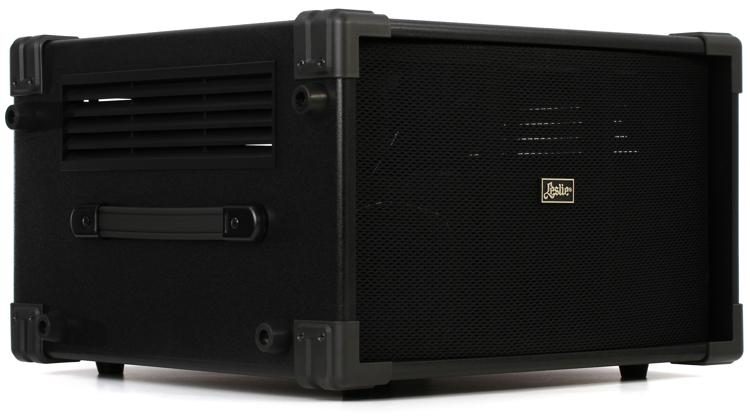
The Leslie Model 2101 mk2 is the perfect keyboard amp for middle spaces. Its three-channel input allows you to connect your keyboard, organ, and other instruments, while its onboard tube preamp and overdrive circuit give you a wide range of sounds to choose from. Additionally, the Model 2101 mk2’s 50-watt amplifier provides plenty of power for its rotary section, while its two 75-watt amplifiers are more than enough to drive its stationary channels. Finally, the Model 2101 mk2’s MIDI terminal gives you control of several functions from your keyboard or organ.
The Leslie Model 2101 mk2 is the closest to the equally popular Leslie 12+ above. The Leslie 12+ is better in so many ways, including being significantly smaller, but the Leslie Model 2101 mk2 is a lighter and more powerful option. The Leslie 12+ is the kind of amp you buy to perform in a small room or at home, while the Leslie Model 2101 mk2 is perfect for medium-sized spaces.
More features: 3-band EQ, 2-year warranty
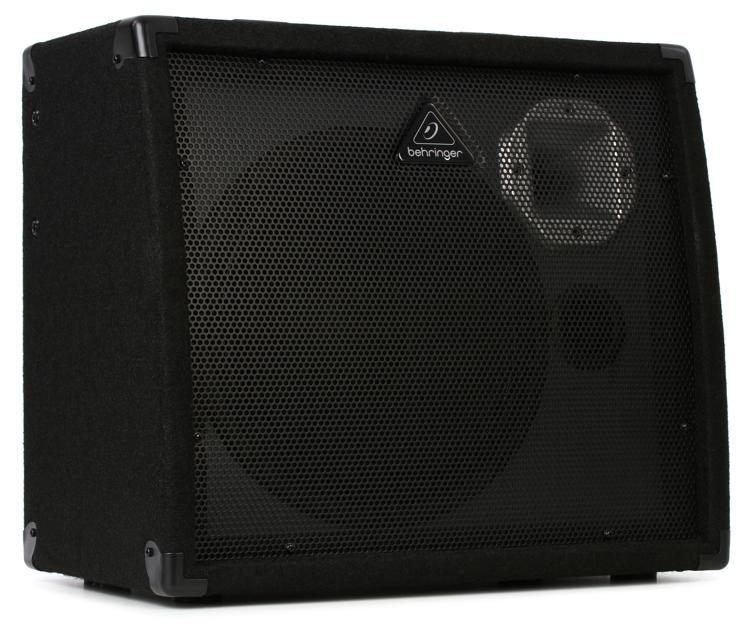
The Behringer Ultratone K900FX is a versatile and powerful keyboard amplifier that is perfect for rehearsals, gigs, and even studio recording. This amp has 90 watts of power and features three separate channels, each with its own volume and FX send controls. The K900FX also has an XLR mic input on channel one, making it ideal for vocalists as well as keyboardists. Additionally, the amp comes equipped with a studio-grade Multi-FX processor and FBQ feedback detection system, ensuring that your performance will sound its best. The K900FX also features a 12″ Bugera speaker for rich, full-range sound. Finally, the amplifier has a line output for connecting to a mixing board or recording device, and a headphone output for private practice.
If you are on a tight budget and must get a Behringer amp, forget the Behringer Ultratone kxd15 and get the Behringer Ultratone K900FX. You will get less power, but the beefed-up 12-inch Bugera woofer will give you a clean, clear sound perfect for large gigs. If you are not a serious musician then the Behringer Ultratone K900FX will serve you well before you can upgrade.
More features: 3-band EQ
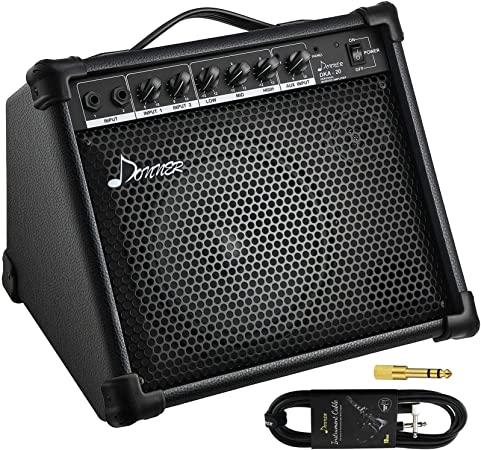
The Donner DKA-20 is the best budget-friendly keyboard amplifier because it provides explosive tone with intuitive controls at a great value. The DKA-20 features an 8-inch low-frequency speaker and a 2-inch high-frequency speaker. You can jam along with your favorite tracks by simply plugging your MP3 player into the Auxiliary input and you instantly become part of the band and/or practice privately with the 1/8″ headphone output jack that also mutes the speaker output. The edge is surrounded by hard material, protecting the amplifier from damage, and a pad of rubber makes it stand safe and stable. This versatile 2-channel keyboard amplifier is perfect for electric keyboard practice.
The Donner DKA-20 is the kind of amp you get if you just need something for practice for the moment. It is the least powerful amp on this list, but its speaker size and quality are pretty impressive. Also, compared to other amps on the list, it is one of the best portables. Its main downside is that its sound has a boxy vibe that may not appeal to most musicians.
More features: 5-band EQ, onboard effects, 2-year warranty
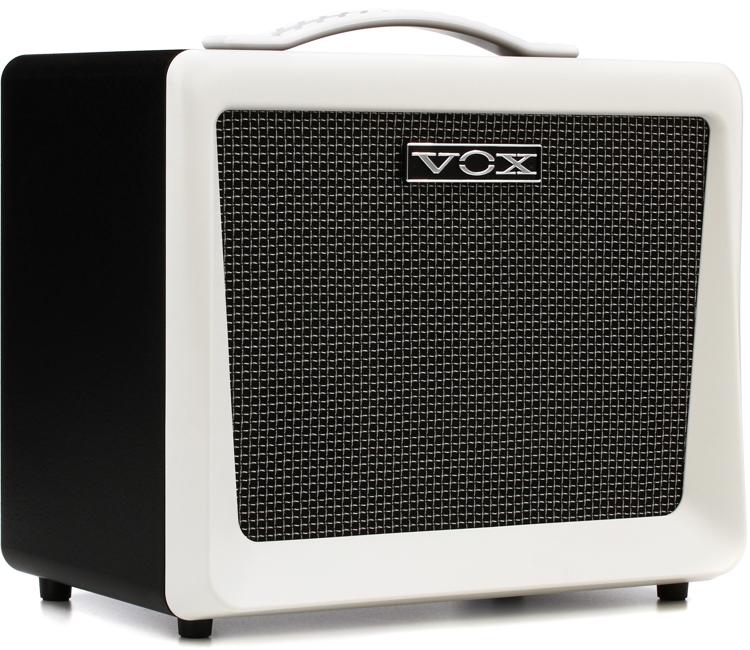
The Vox VX50 KB is a great keyboard amplifier for anyone looking for that classic design with modern features. The Vox VX50 KB’s Nutube circuitry gives you that tube-like sound in a cool-running and highly-portable package. The 50-watt amplifier is more than enough power for most gigging keyboardists and the coaxial speaker gives you great full-range sound. The specially-optimized bass-reflex cabinet helps reproduce rich low-frequency content, making it great for synth bass players. And the three-channel input means you can handle just about any connection requirement. All in all, the Vox VX50 KB is a great keyboard amplifier for anyone looking for classic style with modern features.
The Vox VX50 KB is the only retro-styled amp on this list. It is incredibly lightweight and more powerful than the Donner DKA-20 above. It is also a perfect small practice amp as it is super-lightweight and portable. The amp is also easier to use than most amps on this list as it comes with simpler controls. However, its sound is not the best.
More features: 2-band EQ, Built-in casters and handle, horn
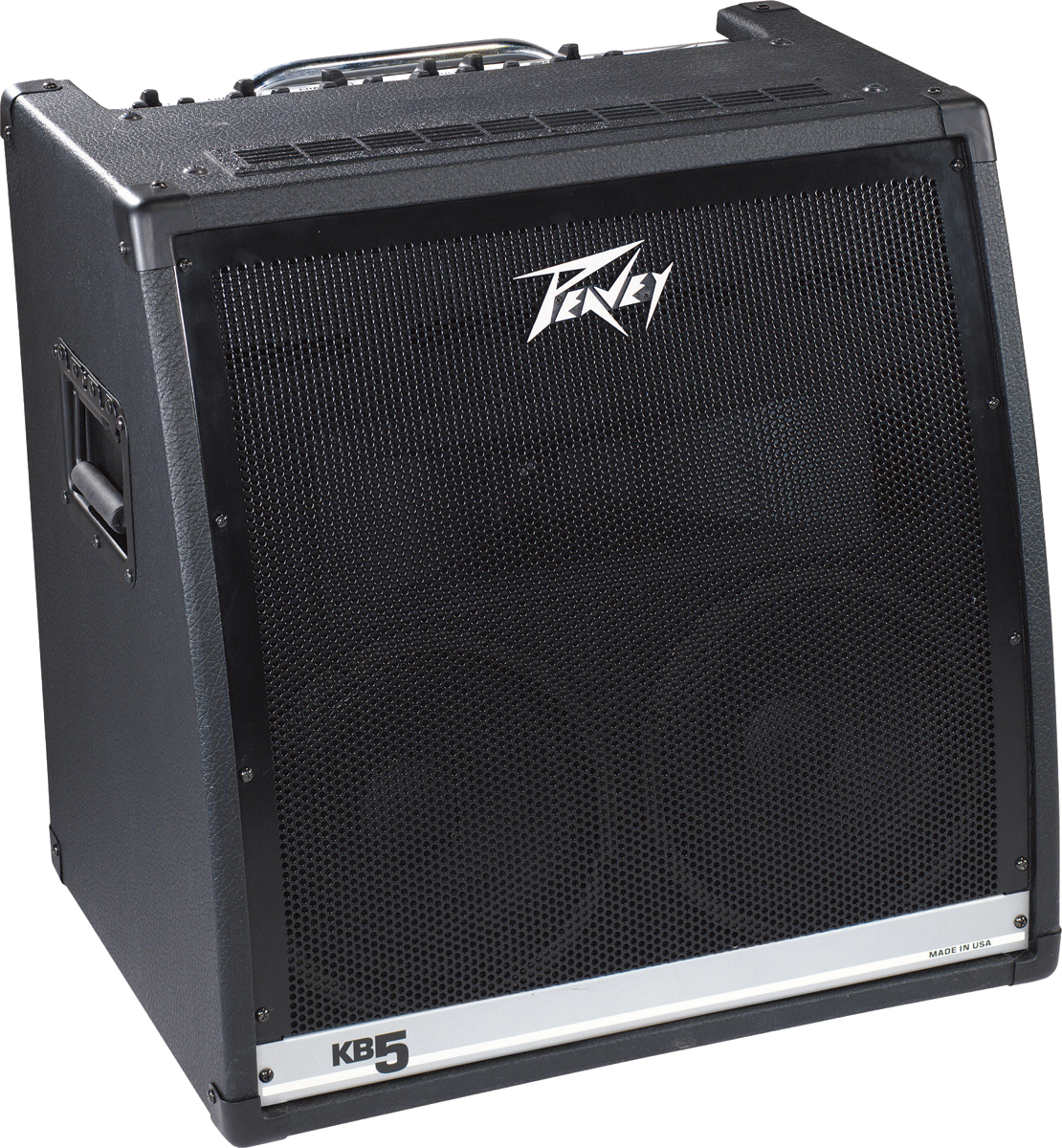
The KB 5 is a great choice for beginner keyboardists because it is packed with features that allow you to get the most out of your instrument. The separate inputs on each channel make it easy to connect multiple instruments or sound sources, and the stereo effects loop and ground lift give you flexibility in how you use the amp. The KB 5 also features a headphone out with level control, so you can practice without disturbing others. The DDT defeat switch allows you to bypass the built-in speaker protection circuitry, giving you even more options for using the amp. Overall, the KB 5 is a great choice for beginner keyboardists who want an amp with plenty of features and flexibility.
The Peavy KB5 compares favorably with the Peavy KB4. Both keyboard amps have great sounds but the KB5 is bigger and pricier. However, the KB4 is the perfect keyboard amp for a practice room because its 15-inch speaker is more powerful than the two small speakers in the KB5. Also, the KB4 is lighter and smaller, thus easier to carry around than the KB5.
More features: handbelt, stable Bluetooth, 3-band EQ, USB connection, 1-year warranty
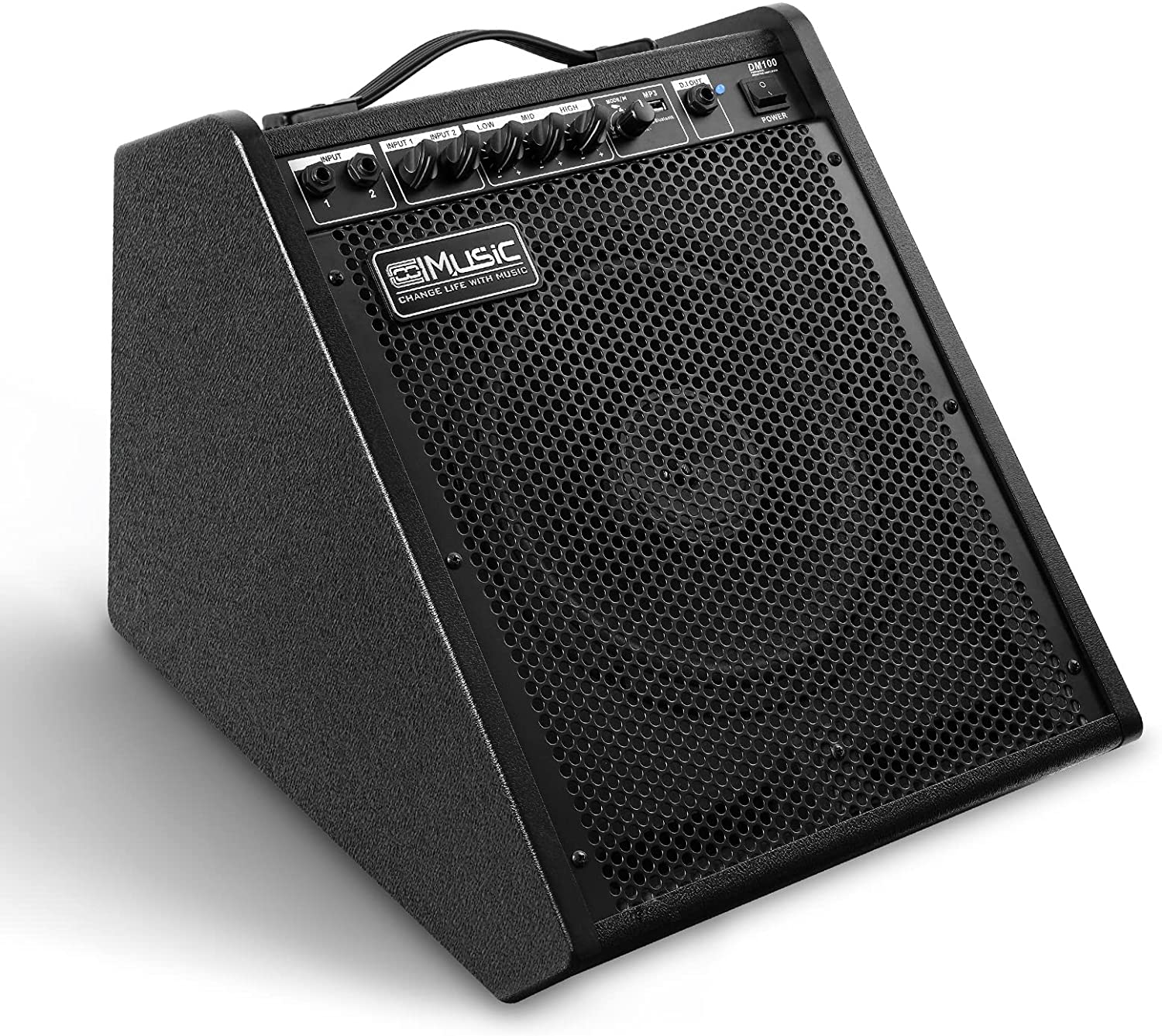
The Coolmusic DM100 is one of the best keyboard amps on the market because it is lightweight (6.61 lbs. only), portable, and has excellent sound quality. it is packed with a lot of features that other keyboard amps don’t have. For example, it has Bluetooth connectivity so you can wirelessly connect your device and play any song you want. In addition, it has a USB connection which allows you to record your performance directly to your computer. It also has two inputs that allow you to plug in two different instruments at the same time. And if that’s not enough, it also has a 3-band EQ so you can shape the sound of your instrument with precision. The Coolmusic DM100 also comes with a one-year warranty, so you can be sure that it is a durable and reliable product.
Compared to other amps by Coolmusic like the DM20, the Coolmusic DM100 is a superior amp. The DM20is not all too bad, especially if you are on a tight budget. The main difference between it and the DM100 is the output wattage. The DM100 is 100 watts while the DM20 is 20 watts. Both amps have a portable design that is incredibly lightweight and small enough to carry around.
Keyboard amps play a key role in any keyboard player’s setup, whether they’re playing gigs or just practicing at home. A good keyboard amp will make your keyboard sound its best, and it will also help you to protect your investment by amplifying your keyboard’s signal so that it doesn’t get lost in the mix.
If you haven’t packed your setup yet, then you can check out our 10 easy-to-use MIDI keyboards or 6 best MIDI keyboards for GarageBand.
At least once every musician asked himself how much power I need. The answer to this question largely depends on the playing environment. If a keyboardist plays in a large venue, they will need an amplifier with more watts to drive bigger speakers. On the other hand, if they play in a smaller venue, they will need less wattage.
When it comes to choosing an amplifier, it is important to look at the wattage specs.
Some amps are rated by their peak watts while others are rated by their continuous or RMS watts.
Peak watts refer to the absolute maximum amount of power an amplifier can put out during momentary peaks. The amp will not be able to sustain this level of power output for long periods without damaging the amp.
Continuous or RMS watts are calculated using a continuous sine wave or another signal to measure the Root Mean Square (RMS) voltage at the point of stated distortion. Many believe that an RMS rating is a more realistic measure of an amp’s output.
Most keyboard amps require at least 10 watts of power to function well. Some may require up to 50 watts or more, depending on the size of the amp and the number of speakers it has. Higher-powered keyboard amps are usually better able to project sound over long distances, making them ideal for outdoor gigs or other situations where you need to be heard clearly.
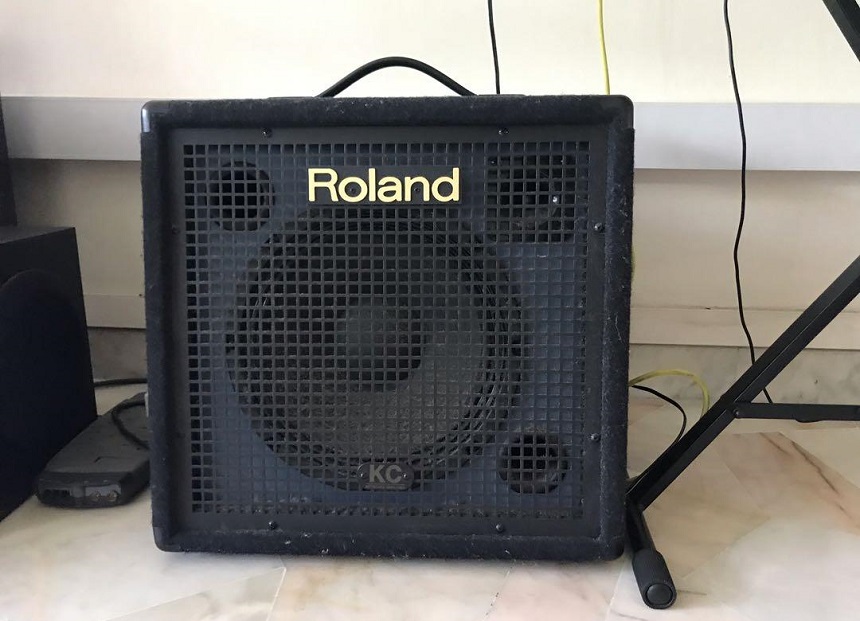
The size of the speaker in a keyboard amp is important for two reasons. First, the larger the speaker, the more bass response you will get from the amp. This is important for keyboard players who want to add some low-end punch to their sound. Second, the size of the speaker affects how loud the amp can be. A larger speaker can handle more power and will therefore be able to produce higher volumes. This is important for keyboard players who need to be heard over a full band.
Ports also play a role in determining the size of the speaker, as they help project tones beyond the range of the woofer.
The addition of a midrange horn divides up the frequency spectrum even further, potentially enhancing the output’s clarity.
Higher-output amplifiers frequently include single or dual 15″ woofers for greater bass response.
Keyboard amps offer multiple channels to plug in multiple keyboards or instruments, microphones, and even stereo sources such as MP3 players and drum machines. This allows the amp to be used as a single audio source for simple performances or practice. Most two-channel models are available, and four-channel models are common among higher-powered amps.
Keyboard amps with multiple channels generally include some mixer-like features. Most include a line-level adjustment per channel and some also include channel-specific EQ controls to boost or cut various frequencies. Some also have channel-specific effects like reverb and chorus, which can be especially useful if you are plugging in a microphone along with your keyboard.
Most keyboard amps have multiple stereo 1/4″ inputs for keyboards. Some models may also have a combination of 1/4″/XLR input for added versatility. Most keyboard amps also have balanced stereo XLR outputs that allow you to connect the amp to the main PA system while still using the speaker in your amp as an onstage monitor.
Some keyboard amps also have an effect send output that allows you to connect to signal processing or effects units. The processed or wet signal is then sent back through a return input and played through the amp. This can be useful for live performances or in the studio.
The tone of a keyboard amp can vary depending on the type of instrument you’re running through it. For example, a guitar will have a different sound than a keyboard.
Additionally, the tone can be affected by the settings on the amp. For instance, you can usually adjust the treble and bass levels. Some amps have built-in effects, such as fuzz, overdrive, chorus, reverb, flange, and delay.
The way you use the amp will also affect the tone.
For example, if you push the speakers to their max volume with your instrument at max volume, you may blow the speaker. It’s, therefore, best to avoid doing this.
Keyboard amps come in a variety of shapes and sizes, from small personal monitors to large full-range rigs. The size you need will depend on a few factors, such as how many people you’re playing for, what kind of venues you’ll be using it in, and how much volume you need. If you’re just practicing at home or playing small gigs, a smaller amp will suffice. But if you’re playing larger venues or need more power for onstage monitoring, you’ll need a larger amp.
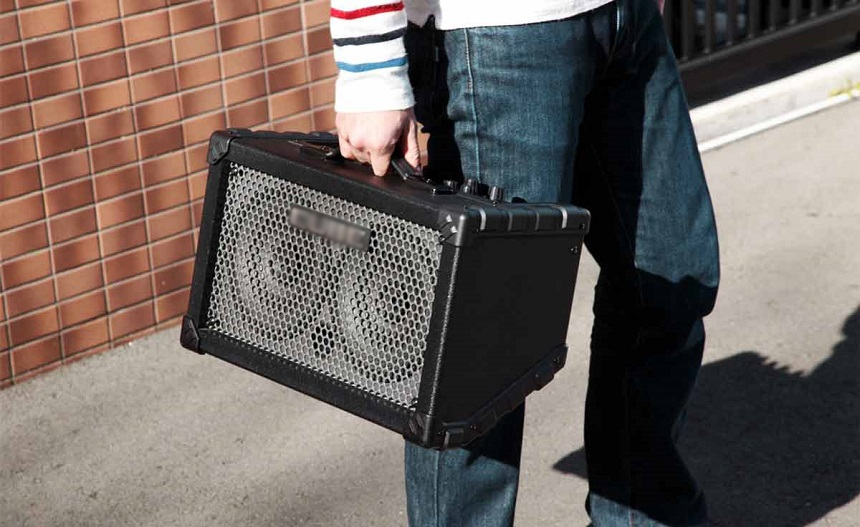
When choosing a keyboard amp, it is important to consider the weight and portability of the amp.
The weight of a keyboard amp will vary depending on the size and type of an amp.
If you plan on using your keyboard amp in different locations, or if you need to transport it frequently, then a lighter amp may be a better option. However, if weight is not a major concern, then a heavier amp may be more appropriate.
There are three main price ranges for keyboard amplifiers: budget, mid-priced, and premium.
Budget keyboard amps will cost no more than a few hundred dollars and are typically designed for beginners. They offer a good entry-level option for those just starting out, but they do have limitations in terms of power and sound quality.
If you’re on a budget and haven’t bought an amp yet, consider checking the 7 best MIDI keyboards under $100.
Mid-priced amps fall into the range of a few hundred to close to a thousand dollars. These are ideal for intermediate keyboardists who are branching out into live performances. They offer more connectivity options than budget models and are better suited for practicing and performing with a band.
Premium keyboard amps are the most powerful and best sounding but also come at a higher price tag, usually over a thousand dollars. They are designed for advanced keyboardists who perform regularly on stage and require an amplifier that can deliver high-quality sound and withstand heavy use.
As a keyboardist, you know that having a great amplifier is essential to getting the most out of your instrument. There are many benefits to using a keyboard amplifier, including the following:
It’s worth noting that PA speakers, like keyboard amps, are meant to create sound as transparently as possible.
Are they better than keyboard amps?
The majority of the time, a combination amplifier will be more practical. They’re small and quick to set up and adjust. If you’re just a soloist with only your keyboard and a vocal microphone, having more control over your entire sound might be useful. In that case, you may wish to look at a multi-purpose PA speaker or one of the innovative “tower” speaker systems.
PA speakers are designed to cover a wide range of frequencies, from the very low end up to the highest treble notes. They are also built to handle high volume levels without distortion. In contrast, keyboard amps are designed to produce a very clean, clear sound at lower volumes.
The guitar’s amplifier section, controls, and speaker(s) are designed to optimize the range of frequencies in which the instrument operates. Plus, it’s not very effective. As a keyboard player, you’ll require a considerably broader frequency range to accurately replicate the enormous variety of synthetic sounds and tones generated by electronic keyboards.
If you are using a keyboard amp that requires a separate power adapter, be sure to use one that is compatible with the amp. Using the wrong power adapter can damage your keyboard amp and void your warranty.
However, most keyboard amps are powered by a standard 9V power adapter.
The Behringer Ultratone KXD15 is one of the best keyboard amplifiers that provides plenty of power and terrific sound quality. The 4-channel stereo mixer with a 7-band graphic EQ provides all-in-one PA functionality, and the XLR input with FBQ feedback detection system accommodates any standard dynamic mic.
The Leslie Studio 12+ is the perfect combo amplifier for gigging, with its vintage tube tone and solid-state power. It also comes with a footswitch to switch between fast and slow rotor speeds, making it even more versatile.
The Donner DKA-20 is a go-to keyboard amplifier for those on a budget. It provides an explosive tone with intuitive controls and is versatile enough to be used for practicing or jamming along with your favorite tracks. The hard material surrounding the edge of the amplifier protects it from damage, and the rubber pad keeps it stable and safe.